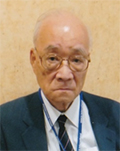
Haruo Sugi
Teikyo University School of Medicine, Japan
Title: Myosin heads in muscle can sense presence or absence of actin filaments to decide the direction of ATP-induced movement
Biography
Biography: Haruo Sugi
Abstract
Although almost 70 years have passed since the monumental discovery of Huxley and Hanson; that muscle contraction results from relative sliding between actin and myosin filaments, which in turn caused by cyclic attachment and detachment between myosin heads extending from myosin filaments and the corresponding myosin binding sites in actin filaments. The performance of myosin heads still remains to be a matter for debate and speculation. The main reason why the research work on the myosin head performance is retarded is asynchronous nature of myosin head movement; experimental methods including muscle mechanics, chemical probes and time resolved X-ray diffraction can detect only averaged myosin head movement with ambiguous results. To visualize and record myosin head movement coupled with ATP hydrolysis, we developed the gas environmental chamber (EC), which enabled us to record ATP induced power and recovery strokes in individual myosin heads in hydrated, living myosin filaments in the presence or absence of actin filaments. Our results obtained from experiments using the EC have revealed the fundamental properties of myosin heads in muscle, which can be summarized as follows: In the absence of actin filaments, myosin heads fluctuate around the definite neutral position; on binding with applied ATP, myosin heads take the form of M-ADP-Pi (chargedup state) to perform recovery stroke in the direction opposite to power stroke; after exhaustion of ATP, myosin heads return to the neutral position; in the presence of actin filaments, myosin heads bind with applied ATP to take the form of M-ADP-Pi (charged-up state) to perform power stroke while attached to actin filaments; after exhaustion of ATP, myosin heads return to the neutral position. These results show that myosin heads can sense presence or absence of actin filaments and decide the direction of ATP induced movement without being guided by actin filaments.

